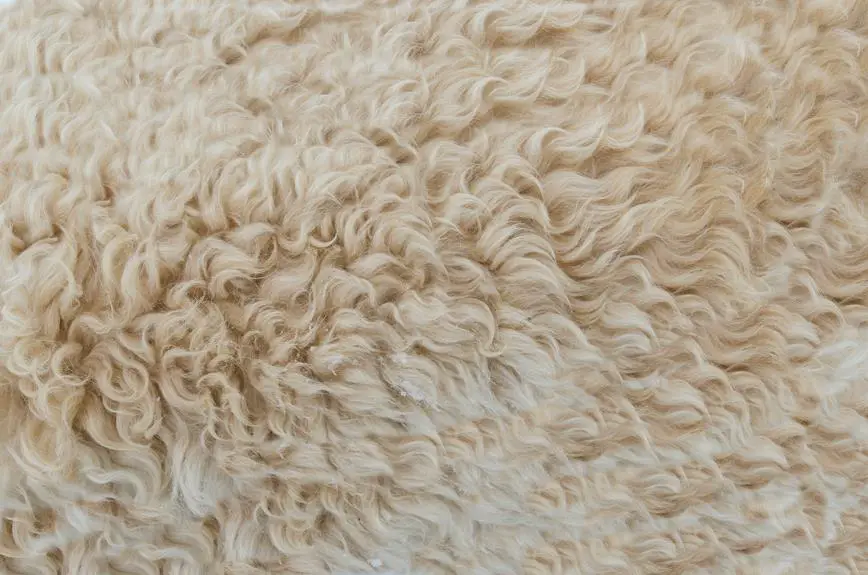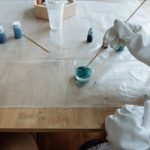Tired of seeing your vibrant clothes turn dull after washing? Just like a skilled painter uses precise strokes to keep colors from blending, you can prevent fabric color bleeding with a few simple tricks.
By sorting your clothes by color before washing, using cold water, adding vinegar to the wash, washing new garments separately, and trying color-catching laundry sheets, you can maintain the brilliance of your favorite garments.
These easy methods will help you master the art of laundry, protecting your clothes from the frustrating fate of color bleeding.
Key Takeaways
- Separate colorfast fabrics before washing to maintain vibrant hues.
- Use cold water for washing to prevent fabric color bleeding.
- Add vinegar to the wash to help set the dyes and minimize color transfer.
- Wash new garments separately to prevent color bleeding and preserve the quality of both new and existing garments.
Sort Clothes by Color Before Washing
Before washing your clothes, always remember to sort them by color to prevent fabric color bleeding. This simple step can save your garments from potential color transfer disasters.
Start by separating colorfast fabrics like darks, lights, and whites. Colorfast fabrics are less likely to bleed, but it's still important to wash them separately to maintain their vibrant hues.
Additionally, pay attention to any new items with bright or intense colors, as these are more prone to bleeding. Incorporating fabric care techniques such as using cold water, gentle detergent, and avoiding overloading the washing machine can further safeguard your clothes from color bleeding.
Use Cold Water for Washing
To prevent fabric color bleeding, use cold water when washing your clothes. This simple step is crucial for fabric care and is one of the most effective laundry tips to preserve the vibrant colors of your garments. When you wash clothes in hot water, it can cause the fabric dyes to loosen and bleed, especially for dark or bright-colored clothing. By using cold water, you can minimize the risk of color bleeding and help your clothes maintain their original appearance.
Cold water is gentle on fabrics and helps to prevent color transfer between garments. It's particularly beneficial for delicate items and prevents them from shrinking or becoming misshapen. Additionally, cold water washing is more energy-efficient, saving you money on utility bills while also reducing your environmental impact.
Make sure to turn your clothes inside out before placing them in the washing machine to further protect the colors. Using a high-quality detergent specifically designed for cold water washing will ensure that your clothes are effectively cleaned while maintaining their vibrant hues.
Add Vinegar to the Wash
When washing your clothes to prevent fabric color bleeding, consider adding vinegar to the wash to help set the dyes and minimize the risk of color transfer between garments. Using vinegar in the wash can be an effective way to prevent bleeding and keep your clothes looking vibrant and fresh. The acetic acid in vinegar helps to seal the color into the fabric, preventing it from running onto other clothes during the wash. Here's a simple guide on how to use vinegar to prevent fabric color bleeding:
| Steps | Instructions |
|---|---|
| Step 1 | Add 1/2 to 1 cup of white vinegar to the washing machine |
| Step 2 | Pour the vinegar directly into the detergent dispenser |
| Step 3 | Wash your clothes as usual, using cold water |
| Step 4 | Enjoy your freshly washed clothes free from color bleeding |
Wash New Garments Separately
Consider washing new garments separately from your other clothes to prevent any potential color bleeding, ensuring the longevity of their vibrant hues and minimizing the risk of discoloration on your existing wardrobe.
This simple step is crucial for effective garment care and maintaining dye stability. When you wash new garments for the first time, excess dyes may still be present and can easily transfer onto other clothing items in the same load.
By washing them separately, you can prevent the risk of color bleeding and preserve the quality of both your new and existing garments.
Additionally, separating new items from the rest of your laundry allows you to use the appropriate wash settings and water temperatures, catering to the specific care needs of the new fabrics and dyes.
By taking this proactive approach, you won't only protect your clothing investment but also ensure that your wardrobe remains vibrant and free from any unwanted color transfer.
Try Color-Catching Laundry Sheets
You can enhance the protection against fabric color bleeding by using color-catching laundry sheets. These sheets are designed to absorb and trap loose dyes in the water, preventing them from re-depositing onto your clothes. The benefits of using color-catching laundry sheets include the ability to mix colors in the same load without the risk of bleeding, saving time and energy by not having to sort laundry as meticulously, and extending the life of your garments by preserving their original colors.
When choosing the right color-catching laundry sheets, look for a product that's suitable for the type of washing machine you have, whether it's a standard or high-efficiency machine. Consider the size of your loads and the amount of laundry you do to ensure the sheets can handle your typical wash. Additionally, pay attention to any added features, such as fragrance-free options for those with sensitive skin or eco-friendly sheets for those who prioritize sustainability.
Frequently Asked Questions
Can Using Fabric Softener Help Prevent Color Bleeding in the Wash?
Using fabric softener can help prevent color bleeding in the wash, but it's not as effective as other methods. Consider using vinegar, color separation, and a gentle wash cycle to better prevent color bleeding.
Is It Necessary to Wash White Clothes Separately From Other Colors to Prevent Bleeding?
Yes, it's necessary to wash white clothes separately to prevent color bleeding. Fabric segregation is key. Also, select a detergent that's formulated to prevent fabric color bleeding. Following these steps will help maintain the vibrancy of your clothes.
How Often Should I Replace Color-Catching Laundry Sheets?
Replace color-catching laundry sheets every 1-2 loads to ensure effectiveness. Use them in the washing machine with cold water to prevent color bleeding. This method helps to maintain the vibrancy of your clothes and prevents color transfer.
Will Using a Gentle or Delicate Wash Cycle Help Prevent Color Bleeding?
Using a gentle wash cycle can help prevent color bleeding. Also, opt for color-safe detergent and add fabric dye fixation products to the wash. These steps will minimize the risk of colors bleeding into each other.
Are There Any Specific Types of Vinegar That Work Best for Preventing Fabric Color Bleeding?
Yes, there are specific types of vinegar that work best for preventing fabric color bleeding. White distilled vinegar is the most effective, as it helps set the dye and prevents colors from bleeding.
- The Use of Nonwovens in Construction and Civil Engineering - July 11, 2025
- The Use of Nonwovens in Construction and Civil Engineering - July 11, 2025
- The Use of Nonwovens in Construction and Civil Engineering - July 11, 2025







